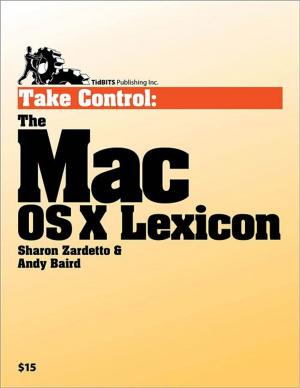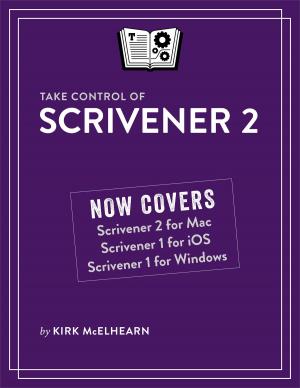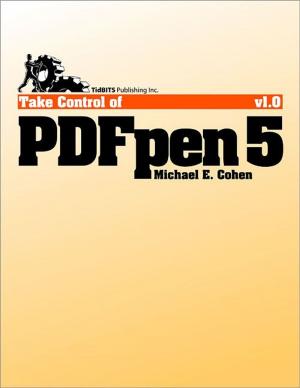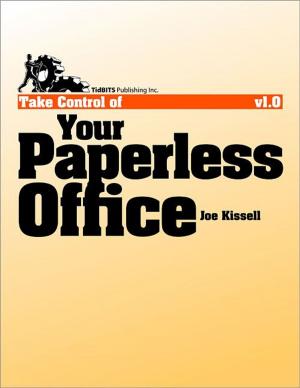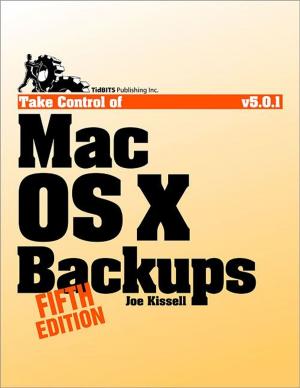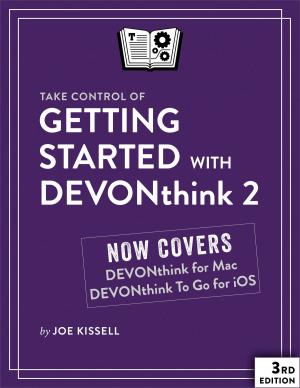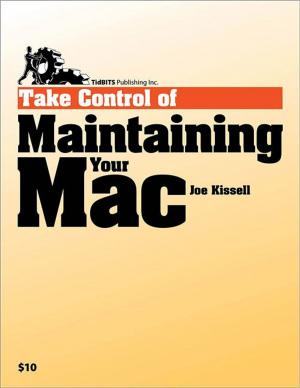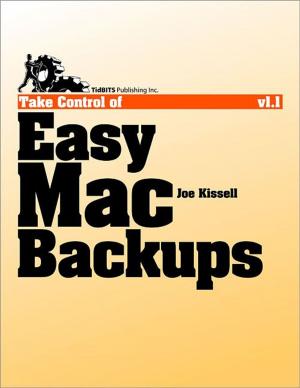| Author: | Kirk McElhearn | ISBN: | 9781615429240 |
| Publisher: | TidBITS | Publication: | October 6, 2014 |
| Imprint: | Take Control Books | Language: | English |
| Author: | Kirk McElhearn |
| ISBN: | 9781615429240 |
| Publisher: | TidBITS |
| Publication: | October 6, 2014 |
| Imprint: | Take Control Books |
| Language: | English |
Let LaunchBar's superpowers save you from Mac drudgery!
Updated October 6, 2014
Learn how to use LaunchBar, from Objective Development, to carry out nearly any Mac task more efficiently. To help you develop a mental map of all that LaunchBar can do, author Kirk McElhearn explains LaunchBar in the context of its six superpowers -- key LaunchBar techniques that no Mac user should be without.
Abbreviation search. The primary way you select things in LaunchBar is by typing a few letters associated with the item you want to find. LaunchBar is smart (so the abbreviation doesn't have to be obvious) and learns from what you type (in case it guessed wrong the first time).
Browsing. Sometimes you don't know what you want until you see it. You can browse folders, recent documents for an app, clipboard history, snippets, tags, and more.
Sub-search. Too many results in a list to browse? Try a sub-search, which is an abbreviation search limited to a list of search results.
Send To. Want to open a PDF in PDFpen rather than Preview? Attach a document to a new email message? Tag a file? Skype a contact? You can send anything on LaunchBar's bar to another app, folder, action, or service.
Instant Send. Instant Send is the fastest way to put a selected file or bit of text on the bar, ready to open in another app, move to a folder, send to a Google search, calculate a result, look up in Dictionary, and more.
Staging. New in LaunchBar 6.1, staging lets you select and work on multiple items at once in LaunchBar, even if they are not located in the same LaunchBar results list. Once selected, you could select a group of files and then move them all to a different folder, tag each one, or send them as email attachments.
Don't worry about remembering all this -- a will jog your memory until LaunchBar has worked its way into your fingertips.
Consider two examples:
Example 1: The most beloved LaunchBar function is to access apps quickly -- especially apps that you don't keep in the Dock. Just invoke LaunchBar (with a keyboard shortcut of your choosing), type a quick abbreviation -- whatever seems natural to you -- and press Return (or, take the express route with LaunchBar's handy Instant Open.) LaunchBar doesn't require predefined abbreviations; instead, it adapts to you! This method of accessing an app uses the Abbreviation Search, superpower #1.
Example 2: Once you've become accustomed to the ease of accessing any app, you can apply abbreviation search to other tasks and begin to unleash more superpowers. One example is to employ superpower #5, Instant Send, to add a book to iBooks: select an EPUB file (like Take Control of LaunchBar!) in the Finder, hold down the key you use to invoke LaunchBar for an extra second to select the file on the bar, type IB to select iBooks, and press Return to send the EPUB file to iBooks.
We could go on forever with our favorite examples: pasting the third item back from the clipboard history, moving a file into a deeply nested folder, creating calendar events and reminders, skipping to the next track in iTunes, running Terminal commands, looking up terms in Wikipedia, counting the characters in selected text, typing emoji, tweeting a quote from an article, finding your uncle's phone number, and so on.
To learn how do all this, and more, read the ebook!
Let LaunchBar's superpowers save you from Mac drudgery!
Updated October 6, 2014
Learn how to use LaunchBar, from Objective Development, to carry out nearly any Mac task more efficiently. To help you develop a mental map of all that LaunchBar can do, author Kirk McElhearn explains LaunchBar in the context of its six superpowers -- key LaunchBar techniques that no Mac user should be without.
Abbreviation search. The primary way you select things in LaunchBar is by typing a few letters associated with the item you want to find. LaunchBar is smart (so the abbreviation doesn't have to be obvious) and learns from what you type (in case it guessed wrong the first time).
Browsing. Sometimes you don't know what you want until you see it. You can browse folders, recent documents for an app, clipboard history, snippets, tags, and more.
Sub-search. Too many results in a list to browse? Try a sub-search, which is an abbreviation search limited to a list of search results.
Send To. Want to open a PDF in PDFpen rather than Preview? Attach a document to a new email message? Tag a file? Skype a contact? You can send anything on LaunchBar's bar to another app, folder, action, or service.
Instant Send. Instant Send is the fastest way to put a selected file or bit of text on the bar, ready to open in another app, move to a folder, send to a Google search, calculate a result, look up in Dictionary, and more.
Staging. New in LaunchBar 6.1, staging lets you select and work on multiple items at once in LaunchBar, even if they are not located in the same LaunchBar results list. Once selected, you could select a group of files and then move them all to a different folder, tag each one, or send them as email attachments.
Don't worry about remembering all this -- a will jog your memory until LaunchBar has worked its way into your fingertips.
Consider two examples:
Example 1: The most beloved LaunchBar function is to access apps quickly -- especially apps that you don't keep in the Dock. Just invoke LaunchBar (with a keyboard shortcut of your choosing), type a quick abbreviation -- whatever seems natural to you -- and press Return (or, take the express route with LaunchBar's handy Instant Open.) LaunchBar doesn't require predefined abbreviations; instead, it adapts to you! This method of accessing an app uses the Abbreviation Search, superpower #1.
Example 2: Once you've become accustomed to the ease of accessing any app, you can apply abbreviation search to other tasks and begin to unleash more superpowers. One example is to employ superpower #5, Instant Send, to add a book to iBooks: select an EPUB file (like Take Control of LaunchBar!) in the Finder, hold down the key you use to invoke LaunchBar for an extra second to select the file on the bar, type IB to select iBooks, and press Return to send the EPUB file to iBooks.
We could go on forever with our favorite examples: pasting the third item back from the clipboard history, moving a file into a deeply nested folder, creating calendar events and reminders, skipping to the next track in iTunes, running Terminal commands, looking up terms in Wikipedia, counting the characters in selected text, typing emoji, tweeting a quote from an article, finding your uncle's phone number, and so on.
To learn how do all this, and more, read the ebook!

